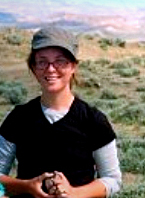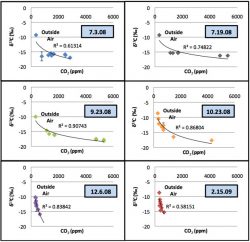Delta-13 C Stable Isotope Analysis of Seasonal CO2 Variation in Central Texas caves
Ashley Quinn

Previous research has proposed the use of speleothem calcite growth rate as a proxy for paleoclimate. Observed seasonality of cave-air CO2 has implications on calcite precipitation and growth rate, and thus on the use of speleothems as paleoclimate proxies. It is important to understand what variables cause these seasonal changes because understanding individual shifts in CO2 production will allow a more precise quantification of how the combined seasonal effect will influence speleothem calcite growth rate and perhaps better characterize seasonal resolution. Endmembers that contribute to seasonal variations in cave-air CO2 concentrations are determined by analyzing δ13C values of cave-air samples collected from specific sites within several central Texas caves: Inner Space Cavern, Natural Bridge Caverns, Whirlpool cave, Maple Run Cave and District Park cave. The spread of the collected data is such that it encompasses seasonal changes.

